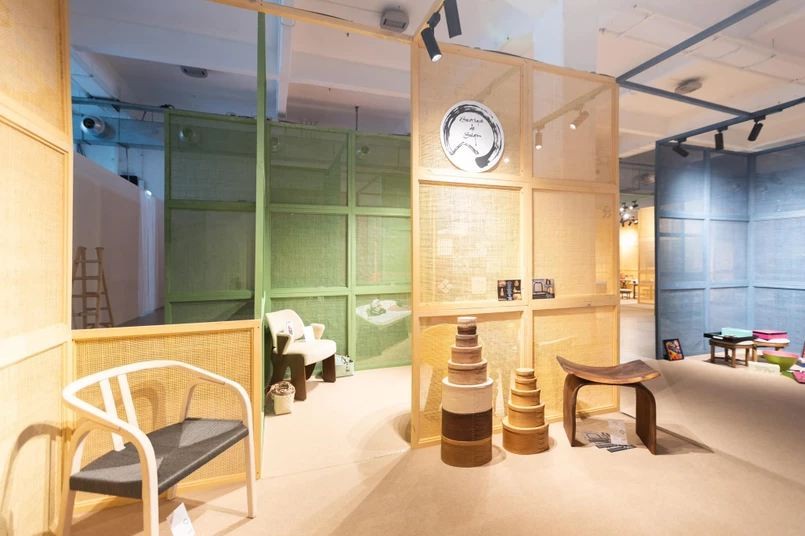Naviglio Grande: The Iconic And Historic Canal in Milan
 |
| Photo: BBC |
The Naviglio Grande is a canal in Lombardy, northern Italy, connecting the Ticino river near Tornavento (23 km south of Sesto Calende) to the Porta Ticinese dock, also known as the Darsena, in Milan. It drops 34 m over 49.9 km. It varies in width from 22 m to 50 m from Tornavento to Abbiategrasso, dropping to 15 m between there and Milan. Initially carries 63 m³ per second, 116 outlets take water to irrigate 500 square kilometres leaving the canal 12 m wide and carrying 12 m³ per second as it enters the dock.
The Naviglio Grande or the Grand Canal is one of Milan's canals located in the Naviglio area.
Milan's largest, most beautiful and most visited canal is the Naviglio Grande Canal. And this is one of the most unusual places in Milan, unlike other attractions of the city, a walk along the canal embankments can be an excellent solution for a variety of leisure activities.
History of Naviglio Grande
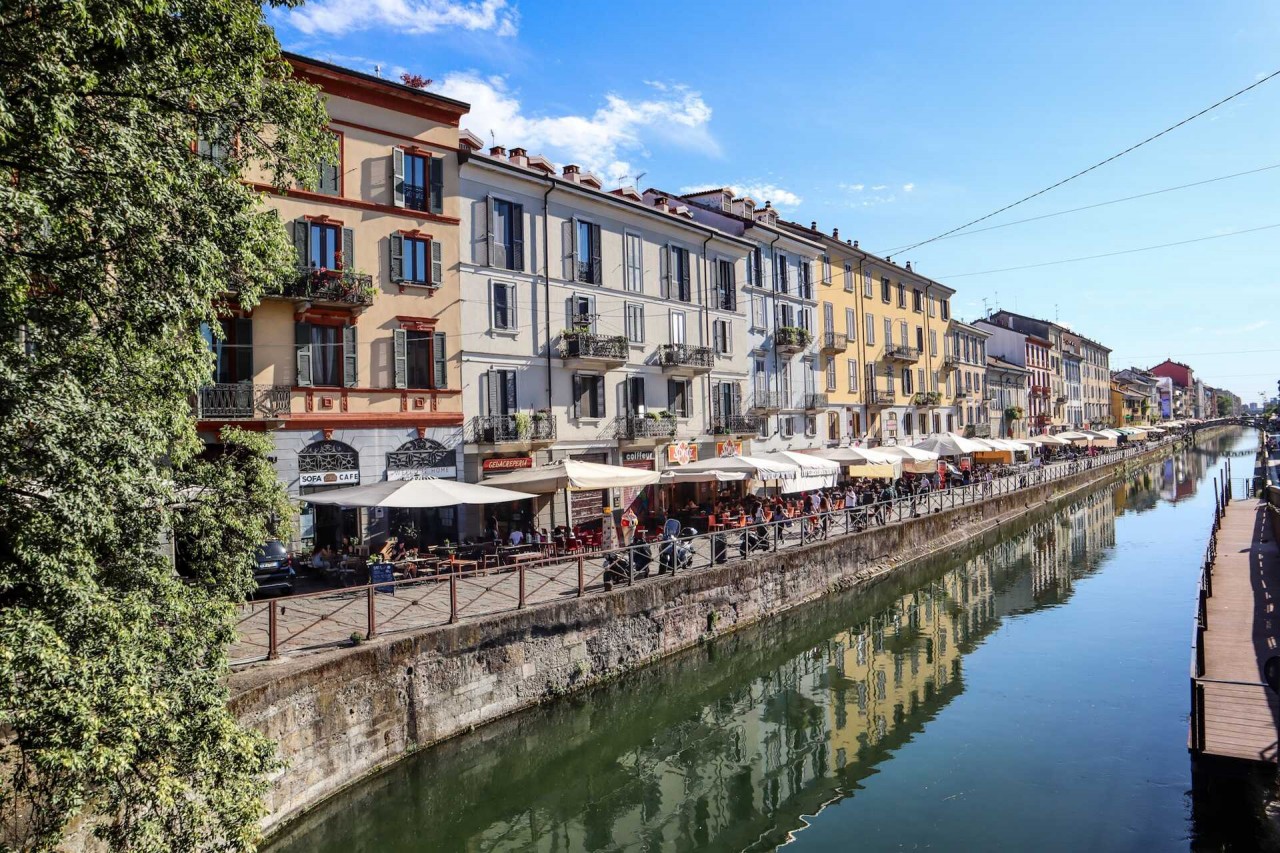 |
| Photo: Nothing Familiar |
The Naviglio Grande was the most important of the Milanese “navigli”. Probably originating as a ditch dug in 1157 between Abbiategrasso and Landriano as a defense against Frederick Barbarossa, it was one of the largest medieval engineering projects, allowing development of commerce, transport and agriculture.
In 1177, construction began near Tornavento, but problems stopped work almost immediately. In 1179 however, a dam was constructed and water from the Ticino was directed towards Turbigo, Castelletto di Cuggiono, Bernate and Boffalora reaching Gaggiano in 1233. This 30 km section, the “Navigium de Gazano” took over 50 years to dig by hand using only pickaxe and shovel. Prisoners from Turbigo were put to work in 1239 to increase the carrying capacity of the canal.
In 1258, the Naviglio Grande reached Milan. New taxes were levied to continue the digging, and although the work stopped again following opposition from the citizens and clergy, the whole canal was navigable from 1272, when the deepening and widening of the canal bed was completed by Giacomo Arribotti and the canal reached the bridge of Sant'Eustorgio (now Porta Ticinese).
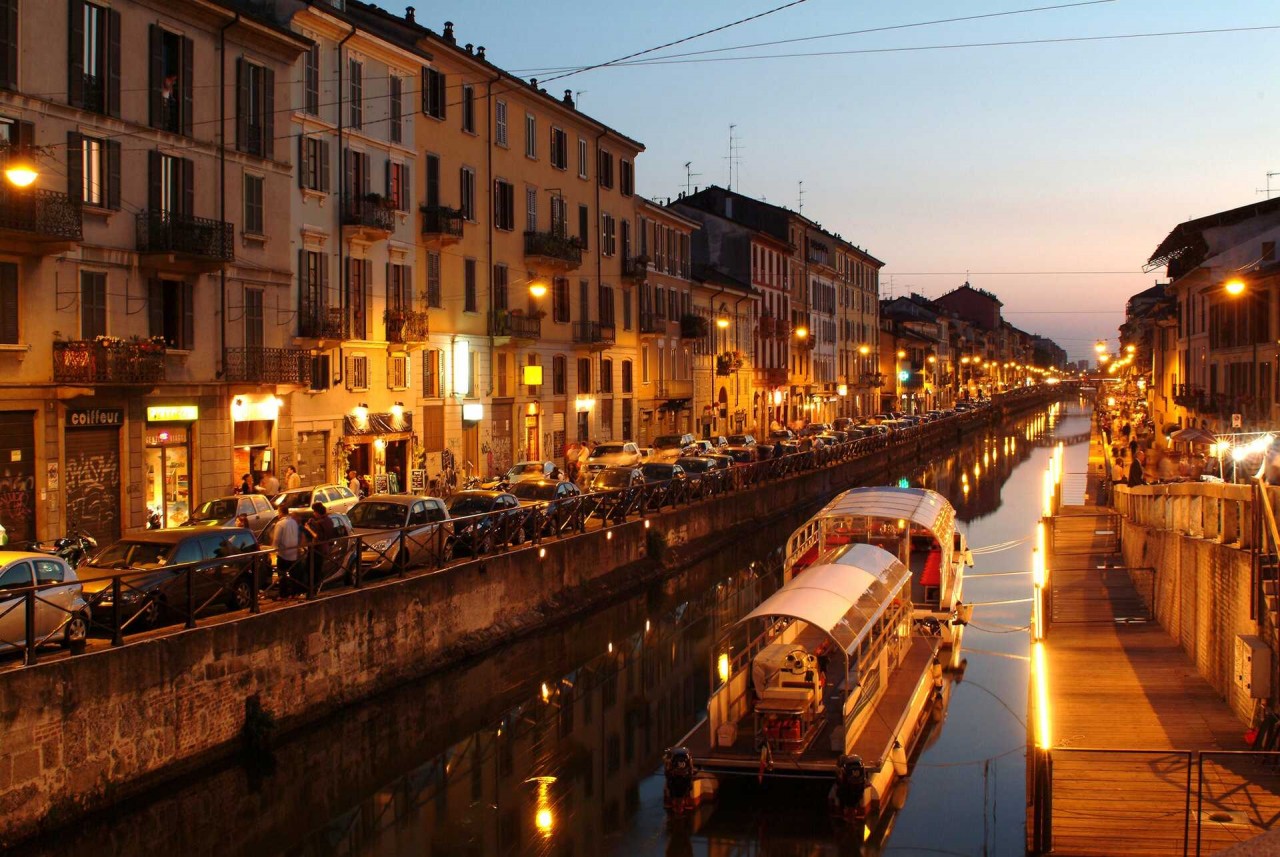 |
| Photo: Culture Trip |
Although intended mostly for irrigation, pontoons called cobbie quickly began using the canal to take salt, grain, wine, manufactured goods, fabric, tableware, manure and ash upriver to Lake Maggiore and Switzerland, bringing back livestock, cheese, hay, coal, lumber, sand, marble and granite. The small lake of Sant'Eustorgio was linked to the Fossa Interna (also known as the Cerchia Interna or Inner Ring) of Milan using a new system of two locks to control the water level, thereby allowing boats to reach Piazza Santo Stefano. This was to allow the canal to be used in transporting stone and marble for the Duomo, whose construction started in 1386. This confirmed the canal to be the most valuable form of transport of Milan, and proved that the network could be expanded to serve the whole region, especially in transferring troops rapidly between defensive castles.
Between 1830 and the end of the century, traffic averaged 8,300 boats of all sizes coming and going, carrying 350,000 tons per year. It peaked again during the second world war – with Allied planes bombing road and rail, water transport again became useful for transporting goods. The surge in activity continued after the war - in 1953 Porta Ticinese dock was the 13th largest in the country in terms of goods received. However, an increase in the value of goods and strong interests supporting road transport caused a rapid decline. During the sixties, the Fossa Interna was covered over and on March 30th 1979 the last cargo of sand was unloaded at the Darsena. Since then the canal has been used only for its original purpose, irrigation.
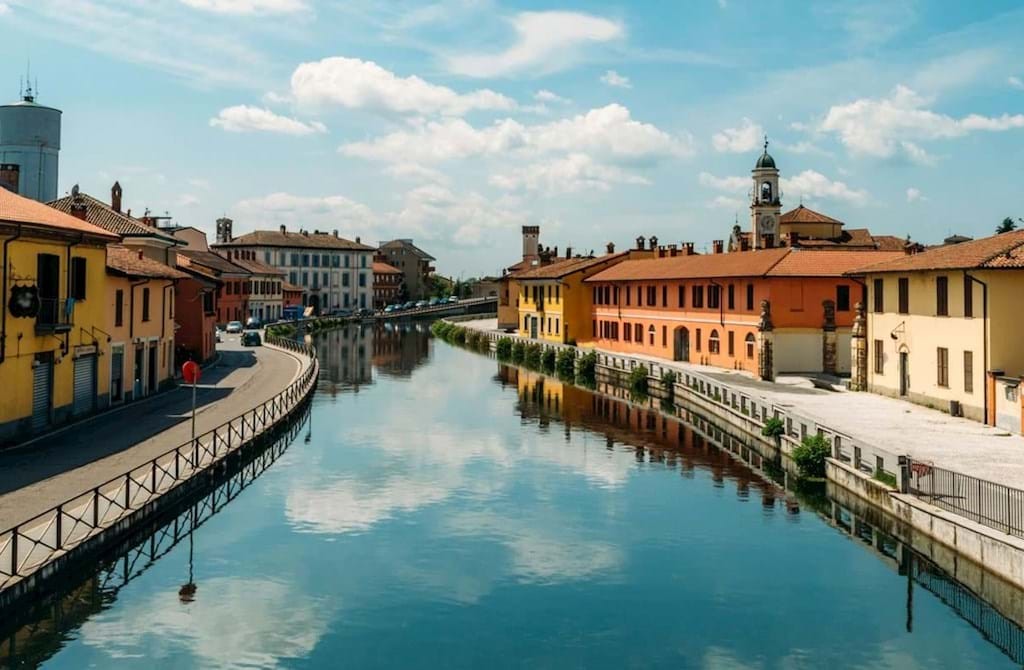 |
| Photo: City Wonders |
Recently the Istituto per i Navigli has been campaigning for the return of navigation on the canal. The project, called From Switzerland to the Sea promotes the restoration of the canal as part of a long distance waterway linking Lake Maggiore (partly in Switzerland) to Venice (Italy).
Getting to the Naviglio and when to visit
The Naviglio Grande is easy to reach from the centre of Milan, taking around 20 minutes via public transport or 35 minutes on foot. Transport via bus or metro is regular, swift and inexpensive – certainly the easiest way to get to the Naviglio Grande. The best time to visit is from late afternoon onwards into the night. This is when the canal's bars and restaurants come to life – with a famously electric atmosphere – and also when live music and other entertainment begins. However, don’t necessarily skip the Naviglio Grande if you can’t make it in the evening. The many brunch and lunch spots and flea markets mean it is brimming with activity around the clock.
Eating and drinking on the Naviglio Grande
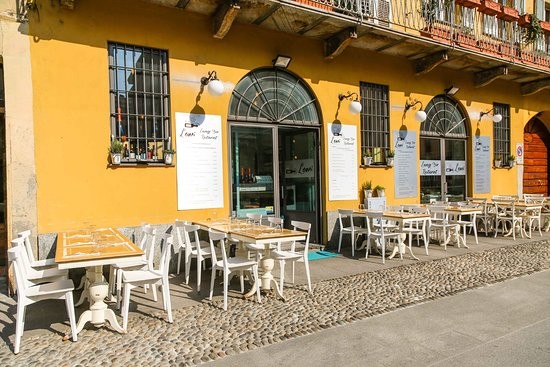 |
| Photo: TripAdvisor |
The Naviglio Grande is noted for the range of fine eateries and bars that line the canal. If you’re a fan of seafood then check out the Langosteria10 Bistrot, one of the best places for fresh seafood in the city. Meat lovers will enjoy Joe Cipolla, with its friendly staff and perfectly prepared steaks. The night doesn’t need to end after you’ve finished your meal. With a host of superb cocktail bars and laid-back pubs on offer, the night is still young. Ugo is the district’s premier cocktail bar, delivering a great atmosphere and even better cocktails to the busy crowd. Of course, you have to sample the wine while visiting Italy. La Vineria and Il Vinaccio are two of the best places near the Naviglio Grande, both offering a quintessential Milano experience.
What You'll See Throughout
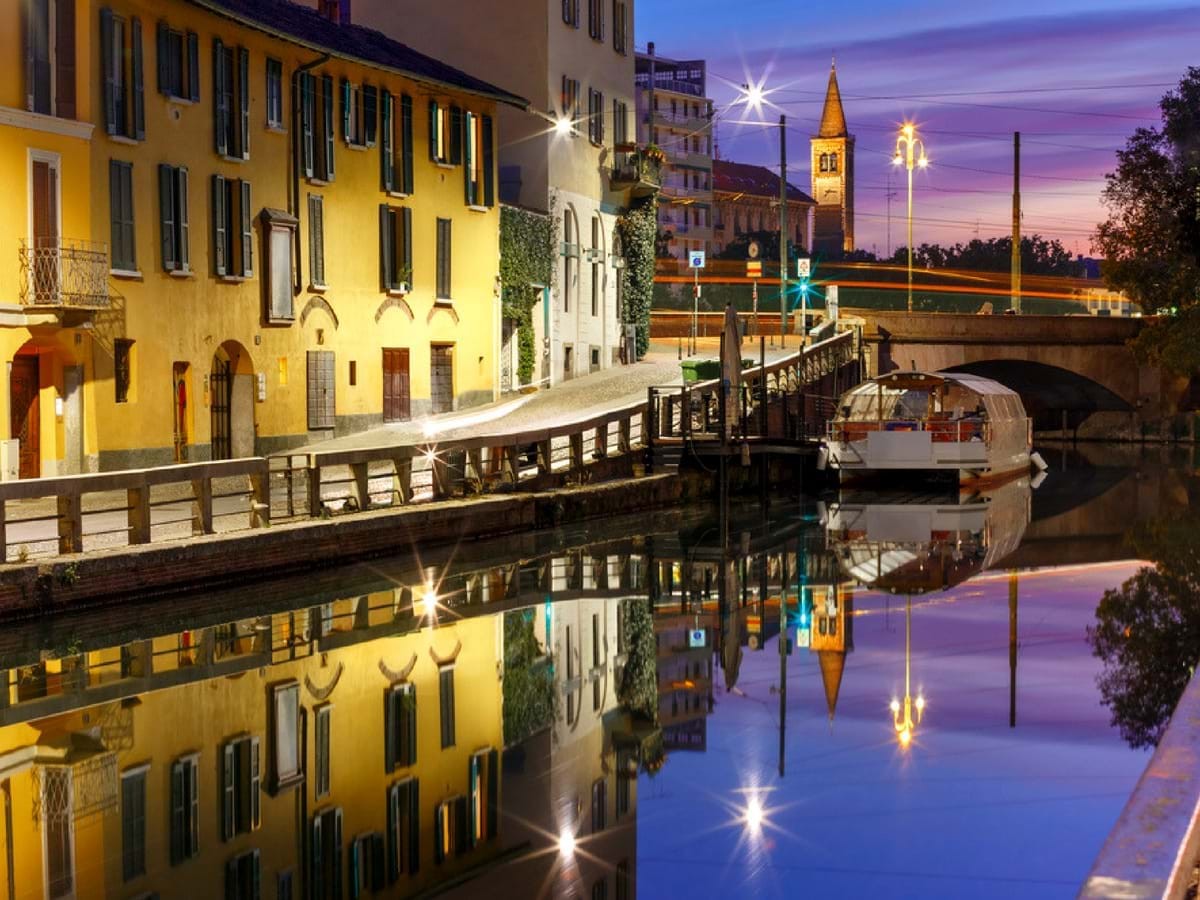 |
| Photo: City Wonders |
There are numerous sites to see as you travel along the Naviglio Grande, as well as through the Navigli district. You’ll see the canals mentioned above, built way back in the 12th century. Fun fact: Leonardo da Vinci took part in building the canal’s dams, to ensure that the canals flowed smoothly and consistently. He also designed the canal locks, which can still be seen at the Naviglio di San Marco basin today. The Basilica di San Lorenzo church can also be seen and visited here. Constructed in the 4th century, it’s one of Milan’s oldest churches. Built atop of the remains of a Roman amphitheater, you can witness frescoes that are over 1,500 years old within the Byzantine St. Aquilino chapel.
There are several art galleries throughout the neighborhood, which showcase the work of younger artists in particular, forever having new talent on display in chic, modern spaces. With various cafés and restaurants throughout serving a range of cuisines, you’ll be spoilt for choice with every meal. And don’t you worry, you can get the best of Milan’s gelato here too! The neighborhood also has a number of shops and markets for a spot of retail therapy if needed. One thing worth noting in the Navilgi district is the nightlife, which always seems to be vibrant and bustling. With distinctive bars littered throughout, you’re sure to enjoy an evening spent along the Naviglio Grande.
On the waterfront of the Grand canal is the Church of St. Maria delle Grazie in Naviglio (Chiesa di S. Maria delle Grazie at Naviglio). The first Church dedicated to the Madonna delle de Grazia, was erected on the left Bank of the Naviglio Grande in the 16th century, when in 1556 the chapel was built, in which was depicted the image of the Madonna.
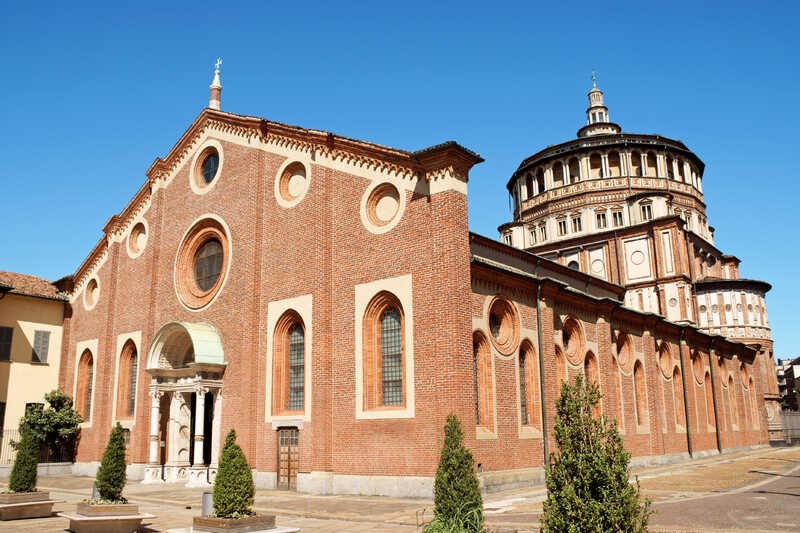 |
| Photo: Dreamstime |
Later the chapel was destroyed, and in its place built a large Baroque Church. Due to a fire in 1719 the Church was badly damaged, then restored again. And in 1849 he was elevated to the rank of parish.
In the late nineteenth century, the Church was destroyed because it became too small for growing companies. Construction of a new Cathedral began in 1901, and on may 1, 1909, the new Church was consecrated by the cardinal Archbishop of Milan Andrea Carlo Ferrari.
Between 1988 and 1996 created a new polychrome window. In 2003, was completed restoration work on the bell tower, internal and external roofs, and the restoration of the apse was completed only in 2009. At the beginning of 2018, the facade of the Church is again restored.
La Darsena
The Naviglio Grande flows into La Darsena, the historic Milan docks which were built in the early 1600s. The docks were redeveloped as part of the Milan World Expo, which took place in 2015. Today, it is a relaxing space with wide, tree-lined pedestrian streets and bags of history from centuries past. It is also home to La Fiera di Sinigaglia, a year-round weekly market which sells everything from gifts and books to crafts, collectibles and much more.
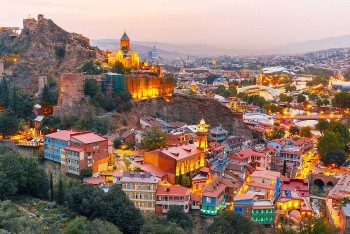 | Visit Beautiful Georgia – The Europe’s Wine Country When we think of wine, Italy, France or Spain will come in mind, but its birthplace, according to a lot of researches, it's in Georgia, ... |
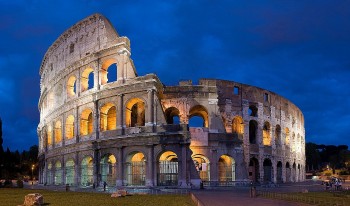 | 11 Insteresting Facts About Italy That You Probably Do Not Know Italy is full of wonderful things, places and iconic plates for first time visitors, but how much do you actually know about this country? Let's ... |
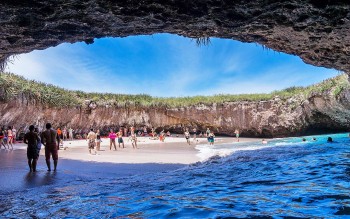 | Extraodrinary Hidden Beach in Mexico: Everything You Need To Know If you are thinking of somewhere tropical and unique to visit in your holiday, Mexico's Playa del Amor, also known as Hidden Beach, is a ... |
Recommended
 Travel
Travel
Vietnam Through Australian Eyes: Land of Flavor, Warmth, and Timeless Charm
 Travel
Travel
Strategies for Sustainable Growth of Vietnam’s Tourism from International Markets
 Travel
Travel
Vietnam Strengthens Its Presence On The Global Tourism Map
 Multimedia
Multimedia
Phong Nha-Ke Bang National Park Named Top Adventure Travel Site
Popular article
 Travel
Travel
Vietnam Welcomes Record-High Number of International Visitors
 Travel
Travel
Luxury Train From Hanoi To Hai Phong To Be Launched In May
 Travel
Travel
Phong Nha Named Top Budget-Friendly Travel Destination for Spring 2025: Agoda
 Travel
Travel





